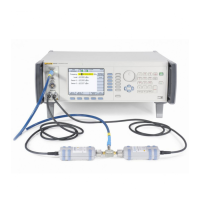2-1
Chapter 2
Theory of Operation
Introduction
This chapter provides the theory of operation for the Product. The theory is
presented at a high-level and is supported by an overall functional block diagram.
Since the Product is supported at the module (board) level, the theory is often a
useful troubleshooting tool for isolating faulty PCAs. The assemblies
(modules/PCAs) in the theory correspond to the replaceable assemblies
described in Chapter 6, List of Replaceable Parts.
Overall Functional Description
Refer to the functional block diagrams shown in Figure 2-1 (96040A) and
Figure 2-2 (96270A) while reading this description. In addition to identifying all of
the assemblies contained in the Product, this diagram provides a functional view
of the data flow between the assemblies. When appropriate, simplified
schematics also accompany the description. These simplified schematics,
Figures 2-3, 2-4, 2-5, and 2-6 are located at the back of this chapter. Assembly
interconnections and cable identification is detailed in Chapter 5, Maintenance.
The following list identifies the major assemblies that comprise the Product and
includes a description of the basic functions each assembly performs:
Synthesizer PCA Develops frequency for output and voltages for
isolated (floating) functions.
RF Output PCA Divide, filter, amplify, control, and attenuate RF
Output.
Digital PCA Optical isolation and routing of digital control data
(IEEE-488 (GPIB) and serial data).
Power Supply PCA Ground referenced power supplies and driver for Low
Voltage Transformer.
Interconnection PCA Rear-panel accessible connectors and switches for
remote communication.
Front Panel Assembly Front panel user interface (UI) for local operation,
includes the Display and the Keypad PCA.
Mains SMPS Assembly Mains isolation with 40 V dc output driving the Power
Supply PCA.

